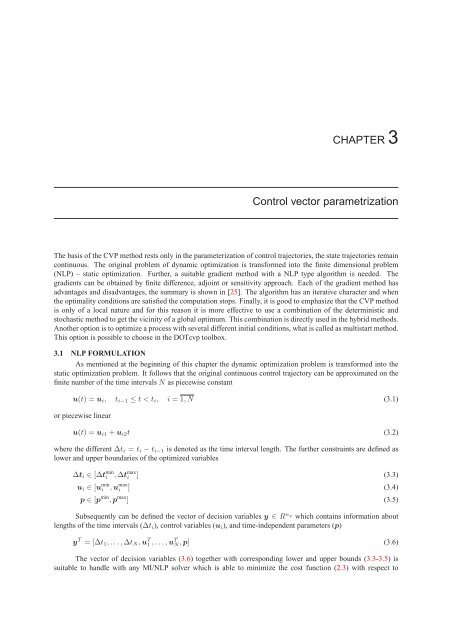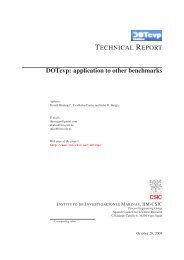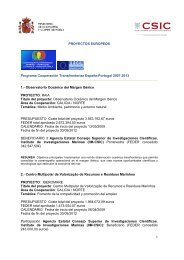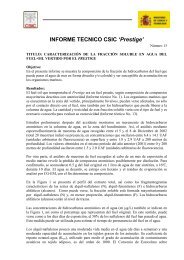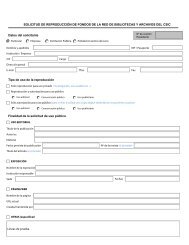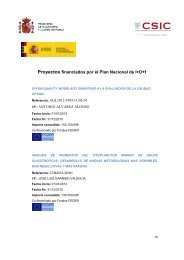DOTcvpSB: a Matlab Toolbox for Dynamic Optimization in Systems ...
DOTcvpSB: a Matlab Toolbox for Dynamic Optimization in Systems ...
DOTcvpSB: a Matlab Toolbox for Dynamic Optimization in Systems ...
You also want an ePaper? Increase the reach of your titles
YUMPU automatically turns print PDFs into web optimized ePapers that Google loves.
CHAPTER 3Control vector parametrizationThe basis of the CVP method rests only <strong>in</strong> the parameterization of control trajectories, the state trajectories rema<strong>in</strong>cont<strong>in</strong>uous. The orig<strong>in</strong>al problem of dynamic optimization is trans<strong>for</strong>med <strong>in</strong>to the f<strong>in</strong>ite dimensional problem(NLP) – static optimization. Further, a suitable gradient method with a NLP type algorithm is needed. Thegradients can be obta<strong>in</strong>ed by f<strong>in</strong>ite difference, adjo<strong>in</strong>t or sensitivity approach. Each of the gradient method hasadvantages and disadvantages, the summary is shown <strong>in</strong> [25]. The algorithm has an iterative character and whenthe optimality conditions are satisfied the computation stops. F<strong>in</strong>ally, it is good to emphasize that the CVP methodis only of a local nature and <strong>for</strong> this reason it is more effective to use a comb<strong>in</strong>ation of the determ<strong>in</strong>istic andstochastic method to get the vic<strong>in</strong>ity of a global optimum. This comb<strong>in</strong>ation is directly used <strong>in</strong> the hybrid methods.Another option is to optimize a process with several different <strong>in</strong>itial conditions, what is called as multistart method.This option is possible to choose <strong>in</strong> the DOTcvp toolbox.3.1 NLP FORMULATIONAs mentioned at the beg<strong>in</strong>n<strong>in</strong>g of this chapter the dynamic optimization problem is trans<strong>for</strong>med <strong>in</strong>to thestatic optimization problem. It follows that the orig<strong>in</strong>al cont<strong>in</strong>uous control trajectory can be approximated on thef<strong>in</strong>ite number of the time <strong>in</strong>tervals N as piecewise constantu(t) = u i , t i−1 ≤ t < t i , i = 1,N (3.1)or piecewise l<strong>in</strong>earu(t) = u i1 +u i2 t (3.2)where the different ∆t i = t i − t i−1 is denoted as the time <strong>in</strong>terval length. The further constra<strong>in</strong>ts are def<strong>in</strong>ed aslower and upper boundaries of the optimized variables∆t i ∈ [∆t m<strong>in</strong>i ,∆t maxi ] (3.3)u i ∈ [u m<strong>in</strong>i ,u maxi ] (3.4)p ∈ [p m<strong>in</strong> ,p max ] (3.5)Subsequently can be def<strong>in</strong>ed the vector of decision variables y ∈ R ny which conta<strong>in</strong>s <strong>in</strong><strong>for</strong>mation aboutlengths of the time <strong>in</strong>tervals (∆t i ), control variables (u i ), and time-<strong>in</strong>dependent parameters (p)y T = [∆t 1 ,...,∆t N ,u T 1,...,u T N,p] (3.6)The vector of decision variables (3.6) together with correspond<strong>in</strong>g lower and upper bounds (3.3-3.5) issuitable to handle with any MI/NLP solver which is able to m<strong>in</strong>imize the cost function (2.3) with respect to


